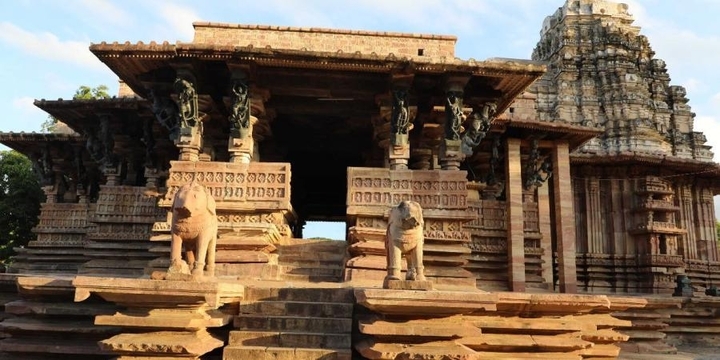- Home/
- Bihar State Exams (BPSC)/
- Article
Story Explained: Telangana’s Ramappa temple & Gujarat’s Dholavira
By BYJU'S Exam Prep
Updated on: September 25th, 2023

Telangana’s Ramappa temple & Gujarat’s Dholavira: The Ramappa temple, a 13th-century temple named for its architect, Ramappa, was recommended by the government as the country’s sole candidate for the UNESCO World Heritage site list in 2019. Dholavira is regarded as one of the five major Harappan sites and most significant archaeological sites of the Indus Valley Civilisation in India.
After the Telangana temple, Gujarat’s Dholavira was inscribed on UNESCO World Heritage List. In this article, we will simplify explain the story of both sites in detail. But let us first look at what is a heritage site is and what are the criteria to decide whether a site is a heritage or not.
What is the World Heritage Site Tag? |
World Heritage Sites are cultural and/or natural sites that the World Heritage Committee has designated as having Outstanding Universal Value and have been placed on the World Heritage List. These locations or structures are believed to be of great significance to everyone.
The sites have been given the designation because they are culturally, historically, scientifically, or otherwise significant, according to the international authority. They are determined to have ‘cultural and natural heritage from throughout the world that is of exceptional significance to humanity.’
What is the selection criteria? |
-
To depict a work of art created by a human being.
-
To display a significant exchange of human values on advancements in architecture or technology, monumental arts, town-planning, or landscape design across time or within a cultural area of the world.
-
To bear a one-of-a-kind or at least extraordinary witness to a current or extinct culture’s cultural tradition or civilisation.
-
To be an exceptional example of a certain sort of structure, architectural or technical ensemble, or landscape that depicts (a) key stage(s) in human history.
-
To be a shining example of a traditional human settlement, land-use, or sea-use that represents a culture (or cultures), or human connection with the environment, particularly when it has become fragile due to irreversible change.
-
To be linked directly or physically to events or live traditions, ideas or beliefs, and exceptional universally significant creative and literary works.
-
to contain extraordinary natural occurrences or regions of outstanding natural beauty and artistic value
-
should be excellent examples of important phases in the evolution of landforms, such as the record of life, significant ongoing geological processes in the creation of landforms, or notable geomorphic or physiographic characteristics.
-
To be exceptional instances of important continuing ecological and biological processes in the growth and development of terrestrial, freshwater, coastal, and marine ecosystems and plant and animal communities
-
To contain the most essential and significant natural habitats for in-situ biological diversity conservation, particularly those harbouring endangered species of great universal importance from a scientific or conservation standpoint.
Telangana’s Ramappa Temple |
Ramappa Temple, is a UNESCO World Heritage Site located in Palampet, Mulugu district, near Warangal, Telangana. The decision was made at UNESCO’s World Heritage Committee’s 44th session, which was held in China on Sunday. The temple lies near Palampet, a hamlet some 200 kilometres north of Telangana’s capital, Hyderabad. During the reign of Kakatiya monarch Ganapati Deva, Racherla Rudra Reddy constructed the temple complex. It was constructed of sandstone and is said to have taken over four decades to complete, beginning in 1213 CE.

According to UNESCO, “the building comprises ornamental beams and pillars of carved granite and dolerite, as well as a distinctive and pyramidal Vimana (horizontally stepped tower) made of lightweight porous bricks, so-called ‘floating bricks,’ which lowered the weight of the roof structures.” The shrine is adorned with sculptures of exceptional artistic quality.


